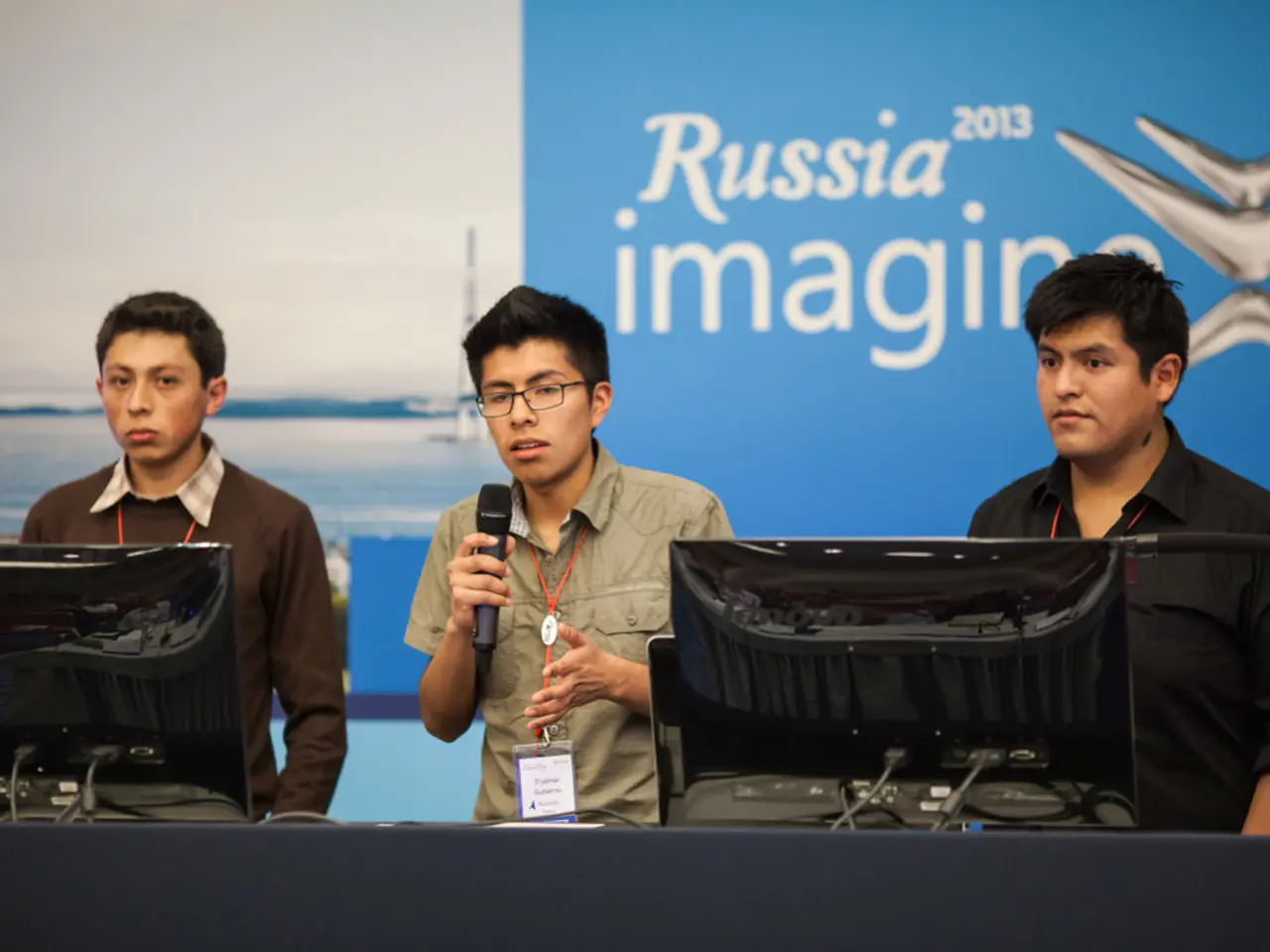GPT-5 unveiling: six instances of astonishment, contrasted by three moments of contemplation
OpenAI, the leading AI research company, has recently unveiled GPT-5, a new and improved version of their popular language model, ChatGPT. The presentation of GPT-5 was watched by an estimated 600,000 people, making it one of the most-watched technology launches, surpassed only by a handful of Apple events.
GPT-5 is designed to be a unified multimodal system, integrating text, images, voice, and live video into a single system. This system uses a dynamic routing mechanism that selects specialized sub-models and reasoning levels based on task complexity or explicit intent.
One of the key improvements in GPT-5 is the massive context window, which supports an extremely large context size of over 256,000 tokens input and 128,000 tokens output. This allows for far more extensive conversations and document understanding than before.
In terms of performance, GPT-5 shows state-of-the-art performance in complex reasoning tasks, coding, and real-world coding benchmarks. It can chain together multiple tool calls reliably, handle errors better, and perform long-running agentic tasks with precision.
GPT-5 is also expected to significantly reduce hallucinations compared to previous versions. It is 45% less likely to produce factual errors than GPT-4 extended with web search, and up to 80% less likely compared to older OpenAI models. However, occasional hallucinations still occur.
The new model also excels in multimodal understanding, performing well across visual, video-based, spatial, and scientific reasoning benchmarks. This allows for better analysis and understanding of images, videos, charts, and diagrams.
GPT-5 is also better at following complex, multi-step instructions and adapting seamlessly to changes in context. It can even integrate with productivity tools like Gmail and Google Calendar for tasks like scheduling and reminders (initially for paid pro users).
The API for GPT-5 introduces a verbosity control parameter to tailor the length and detail of responses. It is designed to be safer, more honest about its capabilities, and robust in delivering helpful answers within safety boundaries.
GPT-5 is expected to represent a major jump forward in comparison to previous versions of ChatGPT. It performs on par with or better than human experts in many economically important professional tasks across over 40 occupations, including law, logistics, sales, and engineering.
Moreover, GPT-5 advances in sophisticated "vibe coding," enabling the creation of visually appealing and responsive websites, apps, and games from a single prompt.
While the presentation of GPT-5 felt amateurish compared to major company standards, OpenAI is focusing on making GPT-5 respond to problematic searches with more context, termed as "safe completion."
OpenAI is currently preparing to make GPT-5 available to all commercial users soon, with enterprise and education availability coming later. However, free users of ChatGPT will have their usage capped and will be moved to a less powerful model when they exceed the cap.
Despite the questionable claims made by OpenAI about GPT-5 being able to do much of a developer's job in two or three years, the audience for the GPT-5 launch demonstrates tremendous interest in the newest version of ChatGPT. A high school science report example showed a potential for making the power of GPT-5 more accessible to the average user, but it needed to be pitched at that level.
Overall, GPT-5 represents a significant step towards an all-in-one AI system combining multimodal input, advanced reasoning, high-fidelity coding, reduced errors, and real-time integration with productivity tools, thus broadening practical real-world applications.
[1] https://arxiv.org/abs/2303.14377 [2] https://arxiv.org/abs/2303.14378 [3] https://arxiv.org/abs/2303.14379 [4] https://arxiv.org/abs/2303.14380 [5] https://arxiv.org/abs/2303.14381
Artificial-intelligence, powered by GPT-5, demonstrates state-of-the-art performance in complex reasoning tasks, surpassing previous versions in reducing factual errors and hallucinations. This advanced AI model, technology by OpenAI, is designed to be a unified multimodal system, integrating text, images, and voice, and expected to perform well in multimodal understanding.




